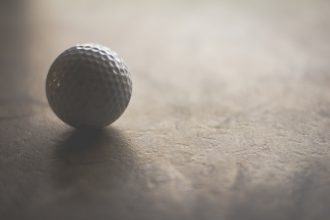
April 8, 2011
Innovention Toys, LLC, V. MGA Entertainment, Inc.
Innovention Toys, LLC, V. MGA Entertainment, Inc., (2010-1290) (March 21, 2011)(affirming finding of infringement but vacating and remanding summary judgment of nonobviousness because of errors in finding prior art non-analogous and in setting the level of skill in the art too low) (Lourie, J.).
The claims covered a chess-like board game. Laser beams are deflected by game pieces with mirrored surfaces. The purpose is to move the game pieces so as to illuminate the opponent’s “movable” key playing piece, a king-like piece with no mirrored surface. In MGA’s game, the key playing pieces were positioned during set up, but not moved in the game. The district court interpreted “movable” according its plain meaning in the claim as “capable of movement as called for by the rules of the game or game strategy.” MGA did not appeal claim construction, but only application of the construed claim term to its game. Infringement turned on whether “capable of movement as called for by the rules of the game or game strategy” required movement as part of game play or if moving a piece into position to set up the game before play was sufficient. The original specification (including claims) did not use the word “movable,” and lynchpin here was the applicant’s comments during prosecution pointing out that a cited prior art did not have movable pieces. The Federal Circuit upheld the interpretation of “capable of movement as called for by the rules of the game or game strategy” in the sense that the key playing pieces were not permanently mounted to the playing board, not limiting capability of movement to during play but also encompassing capability of movement into an arrangement before beginning play. Thus, oddly, the court was analyzing the meaning of the construed meaning of the claim term. Not a whole set of Russian matryoshka dolls, but yet not where one hopes to see claim construction analysis evolving.
The Federal Circuit remanded the case for a new determination of obviousness. The district court had held two references to not be analogous art because they described electronic laser chess games rather than three-dimensional board games. For what must seem like the umpteenth time, the Federal Circuit noted that the test for analogous art has TWO prongs. Here, even if references about electronic laser-based strategy games were not in the same field of art as three-dimensional laser-based strategy games, yet they related to the same purpose and were reasonable pertinent to the problems Innovention faced in devising their game. The Innovention patent itself provided the court with quotable language about considerations in designing strategy games that led into the court’s conclusion that “game elements from any strategy game” would have been pertinent to the problem of game design regardless of whether the elements are virtual or actual. The district court also incorrectly held the level of skill to be that of a layperson, when Innovention had conceded that skill in mechanical engineering or optics was necessary.
It may not be possible to avoid these claim construction (or reconstruction) battles, but a better practice is to define important claim terms, or at least to use them in a sentence, in the specification. When, as sometimes happens, the claims must be distinguished from the prior art in an unforeseen way, so that no adequate words or phrases have been used in the specification, comments accompanying an amendment can provide a desired definition.
On the topic of analogous art, there are advantages to the European problem-solution format, but the problem must be focused. A discussion of general considerations can invite mischief.





































